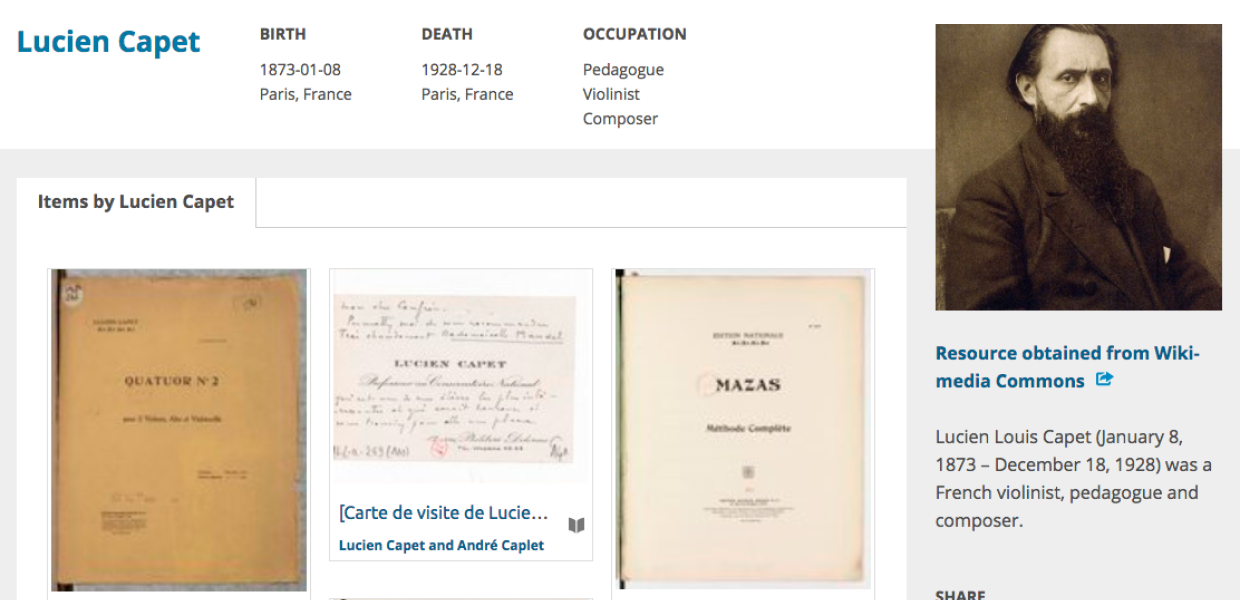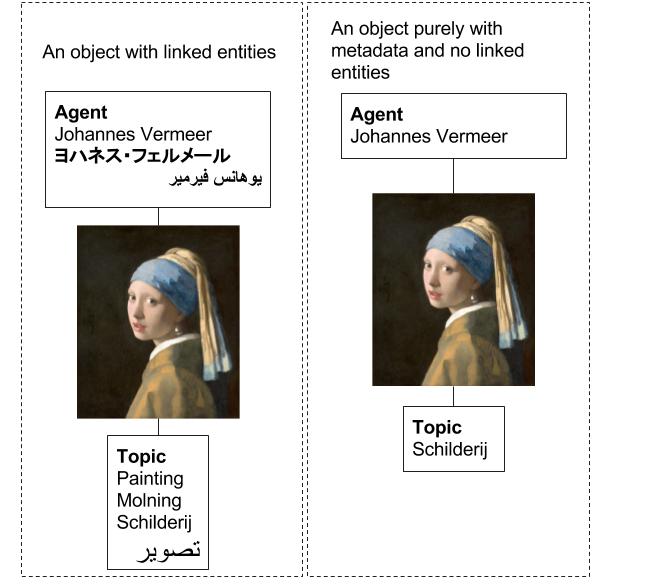Improving discoverability with new ‘entities’ in Europeana Collections
Europeana provides strong searching capabilities of its collections, and it’s getting better at showing how items are connected to each other, and providing an alternative way of exploring material.

- Title:
- Lucien Capet entity page on Europeana Collections
- Creator:
- Europeana
- Date:
- February 2018
- Institution:
- Europeana
- Country:
- The Netherlands
- Copyright:
- CC BY-SA
Europeana Collections has always required people to find an item they’re interested in before they can find other records by the same creator or topic. We’re in the early stages of a significant improvement to our browsing abilities, and with last year’s release of ‘entity’ pages we’ve made some real improvements.
What is an ‘entity’ page?
Entity pages on Europeana Collections are the entry points to content by a specific person, or a topic (other types of entities will come later). They provide context to the items, through depictions and metadata relating to that person or topic. Let’s take Lucien Capet as an example:
Above is the landing page for Lucien Capet. It contains biographical information that confirms his identity and lists items that were created by or about him. These pages are currently only discoverable through the metadata available on the item pages (by clicking on a hyperlinked word or phrase). Previously, this would have triggered a search for the phrase; now it goes directly to an entity page.
Note that while this might not seem to be a huge deal to the person searching for information, the SEO benefits are significant as this offers an accessible point for search engines to discover related and high-quality content.
Multilingual searching abilities
Taking a famous artist such as Johannes Vermeer as an example. In the majority of languages, someone wanting to see works by him would probably be searching for ‘Johannes Vermeer’, but what if the user is from a country where the language uses a different character set? When an item is connected to an entity, it gains the multilingual search terms associated with that entity.

Meisje met de parel Girl with a Pearl Earring. Johannes Vermeer. Mauritshuis. Public Domain.
This object is connected to Johannes Vermeer as an entity, and therefore is searchable not only in Latin script, but also in other languages such as Japanese and Arabic.
Future intentions for Entities
While we currently only offer pages for individual entities at present, the long-term ambition is to offer browse pages which allow people to filter through other kinds of entities that help contextualise the item further. Examples of this could be the ability to view a list of all ‘creators’ of content within Europeana Collections, and then filter this list by options such as ‘Painter’, ‘Inventor’, ‘Philanthropist’.
This benefits the person browsing collections because it means they can discover what kind of content is in Europeana, without having to find an item first. It also benefits people using a search engine, as these pages will be highly crawlable by Google and provider better access for bots to a broader range of content.
